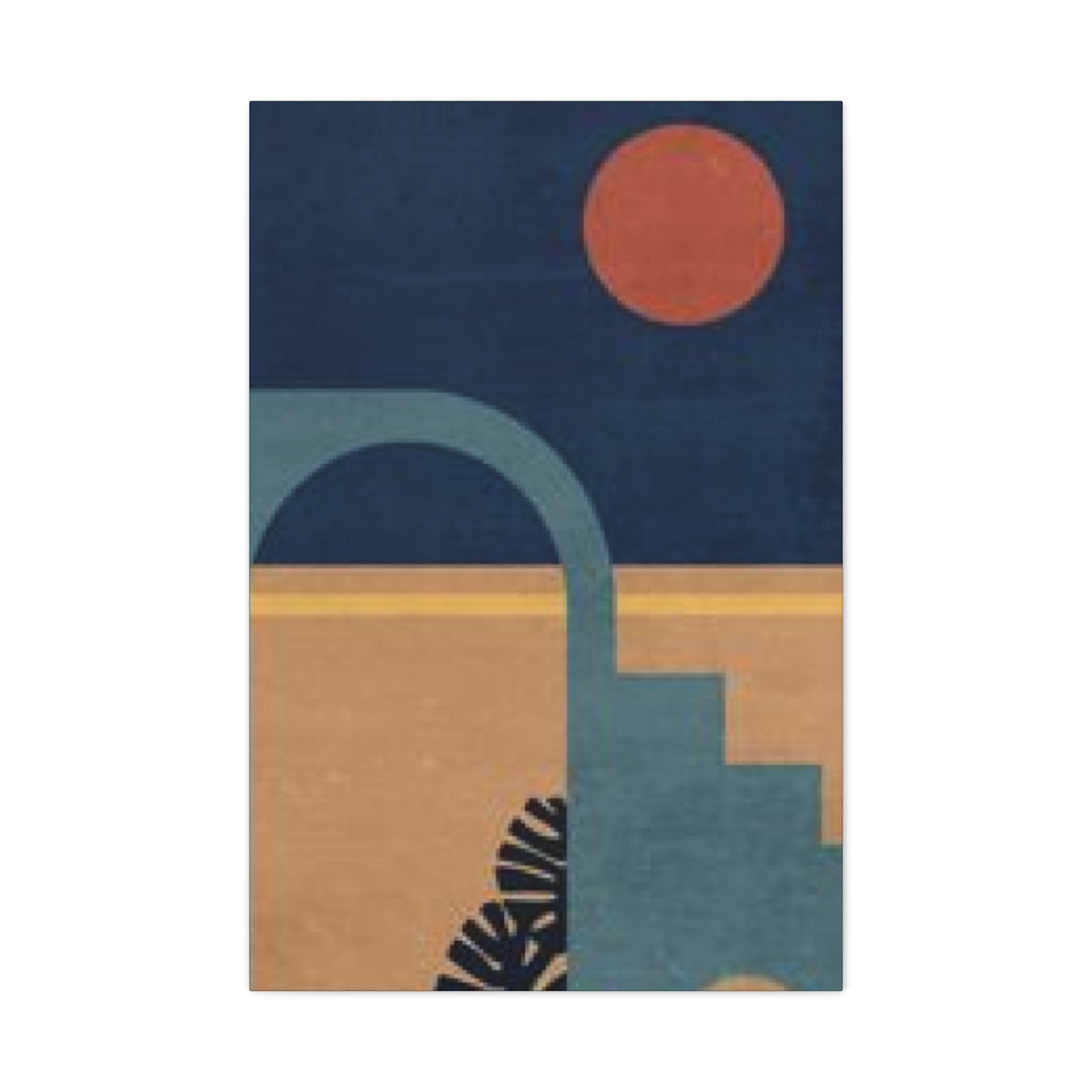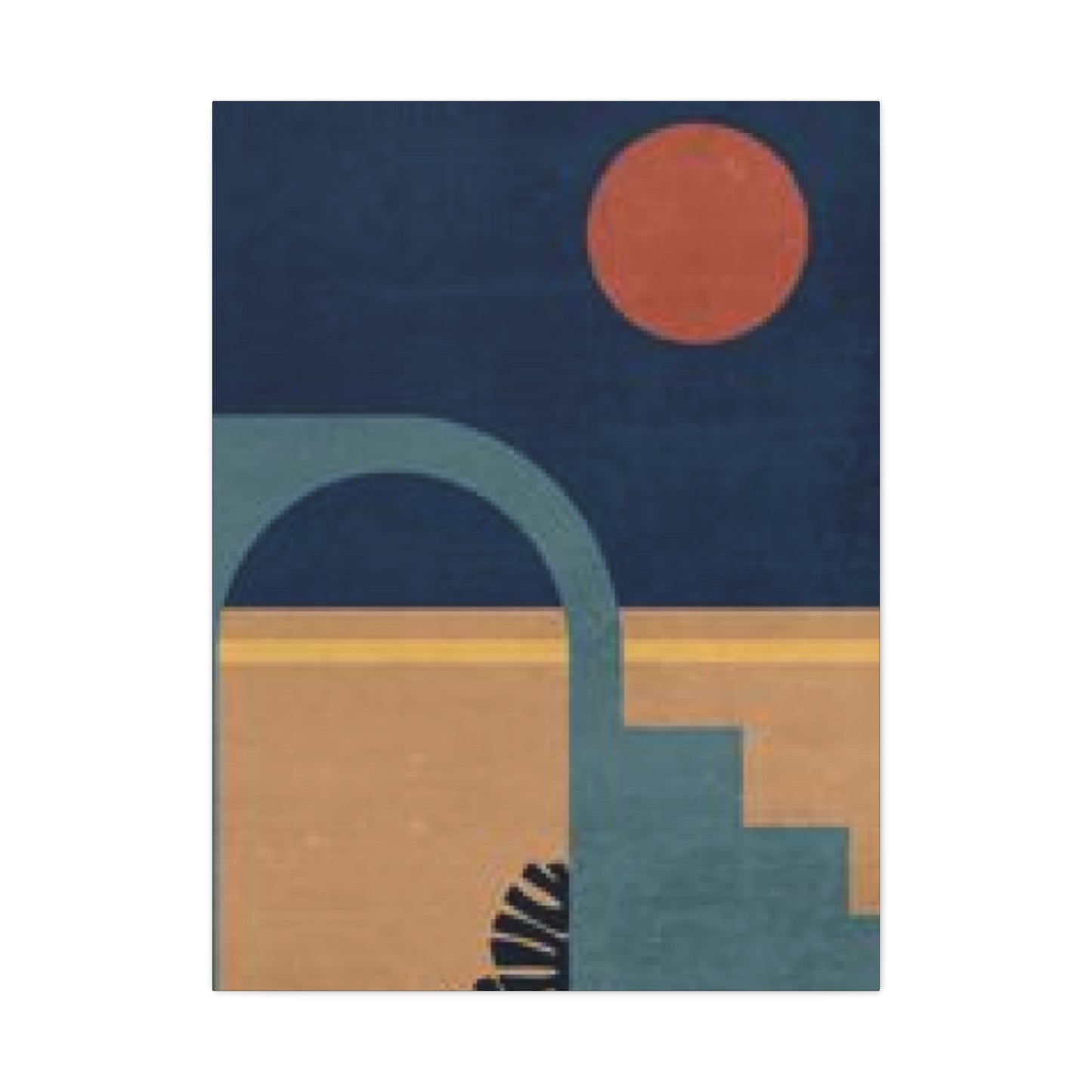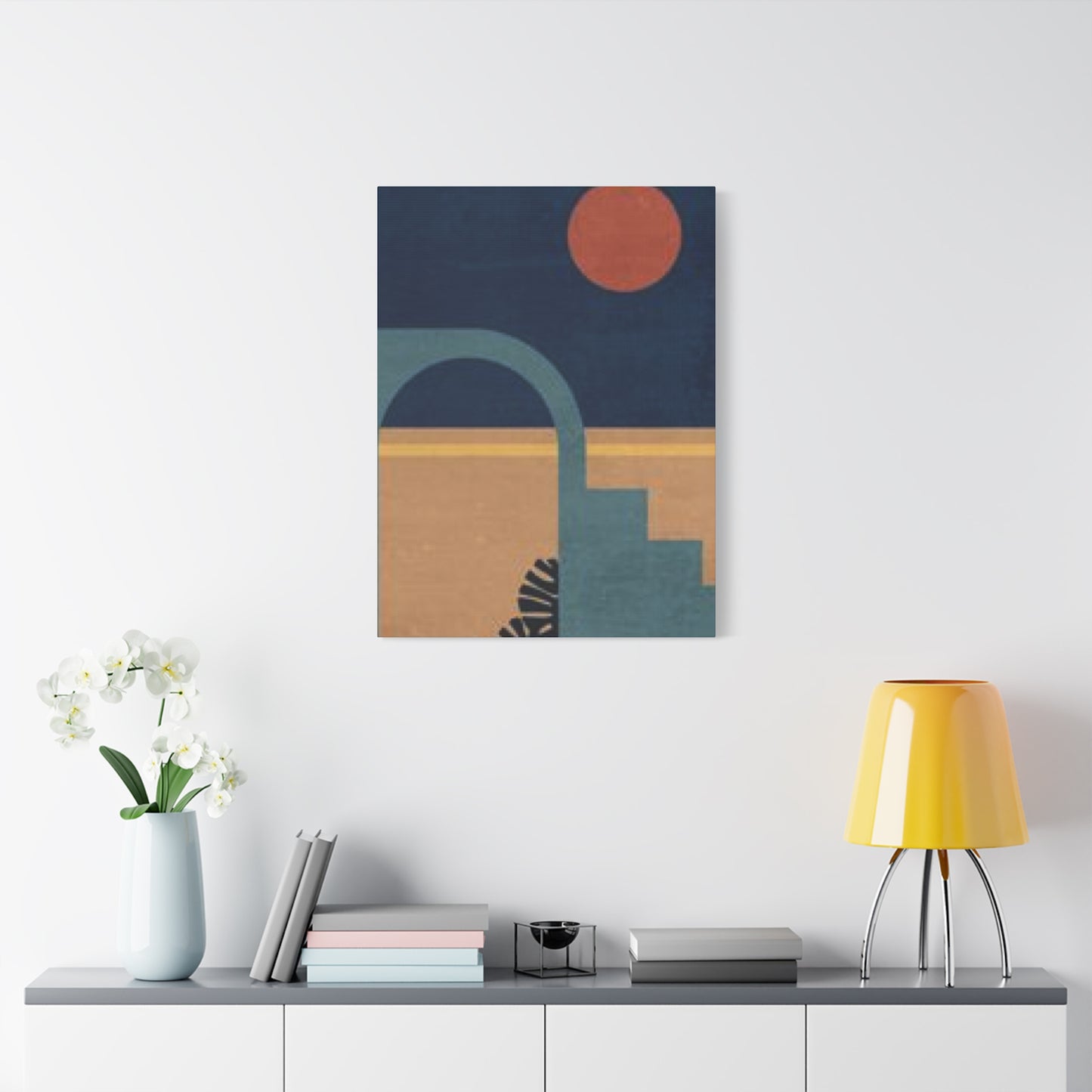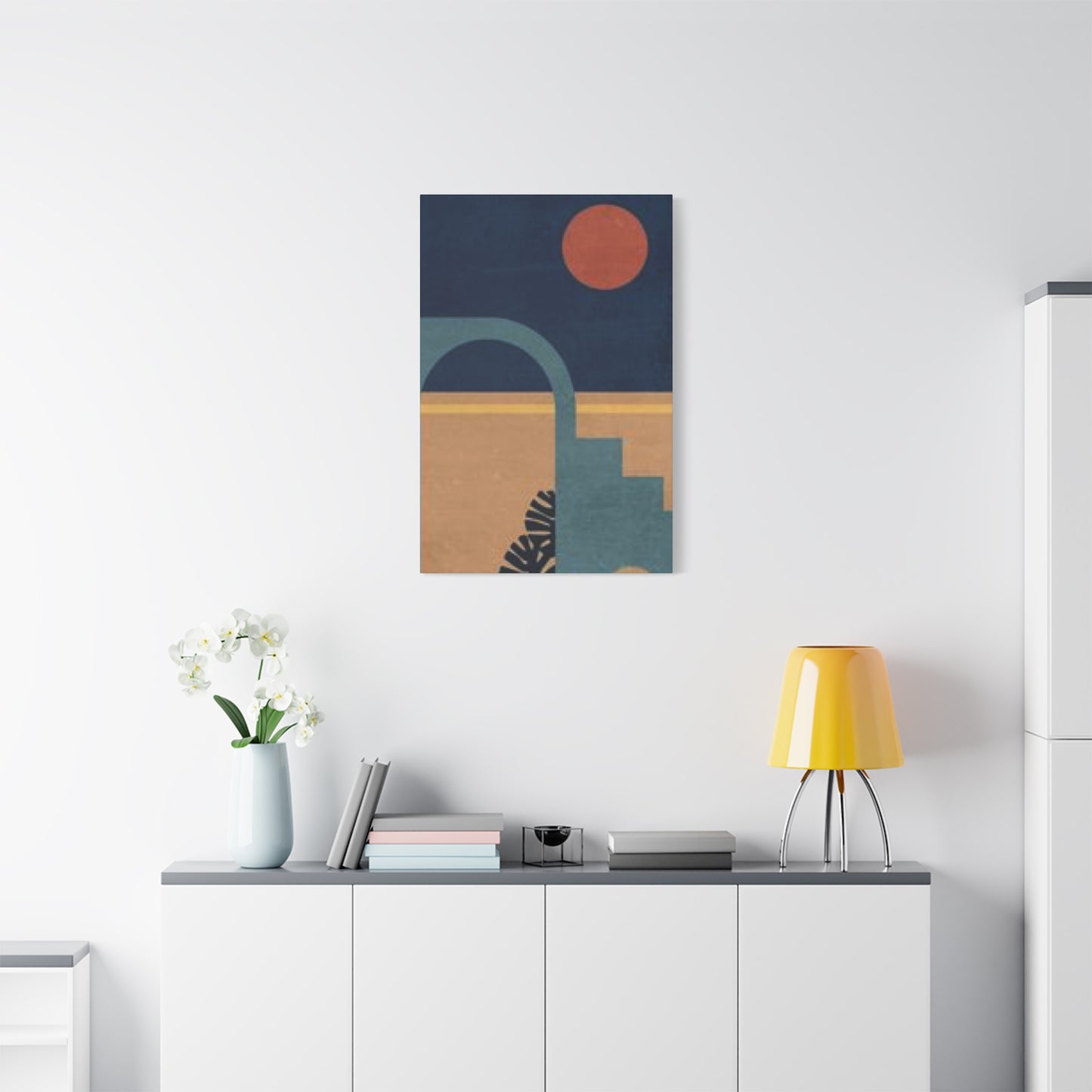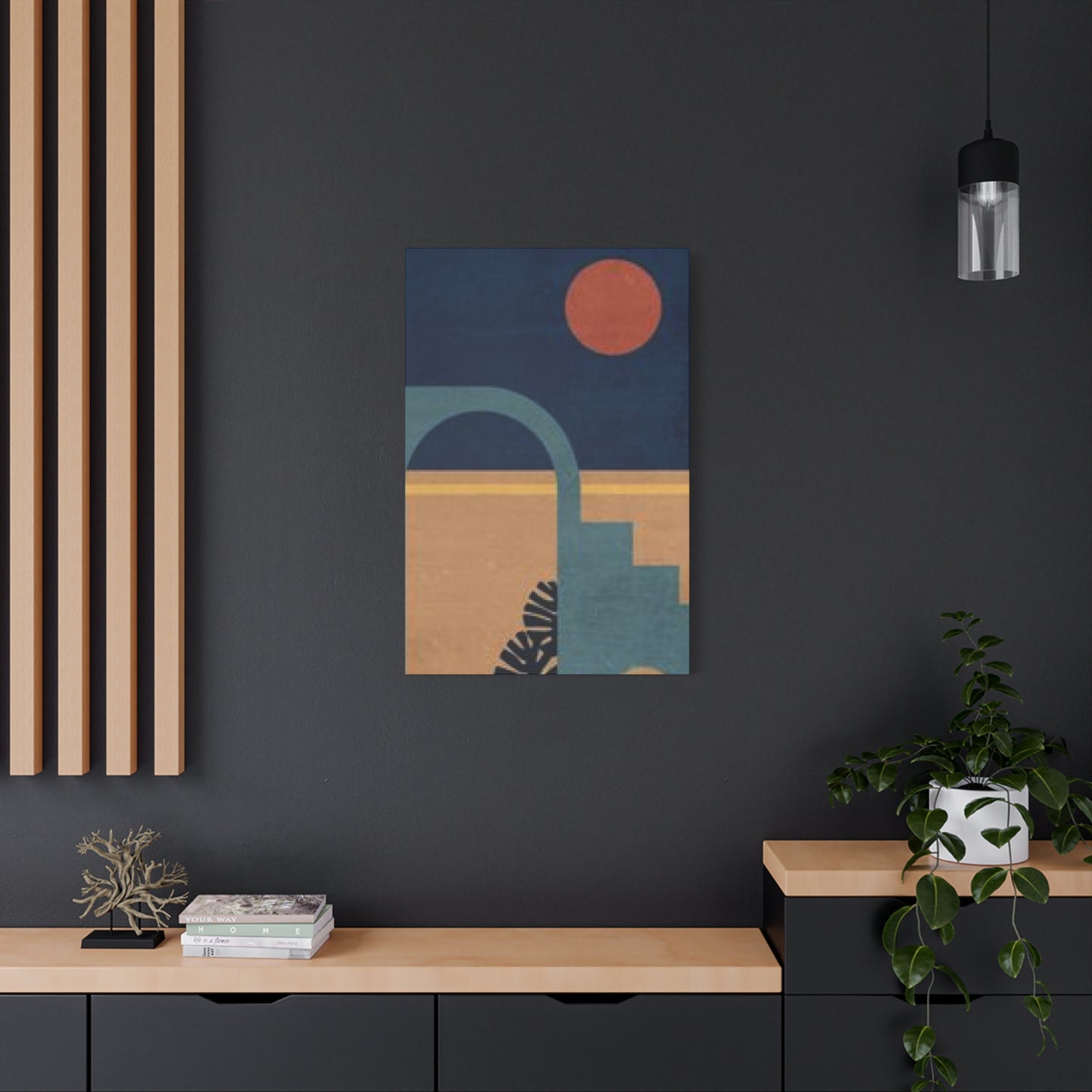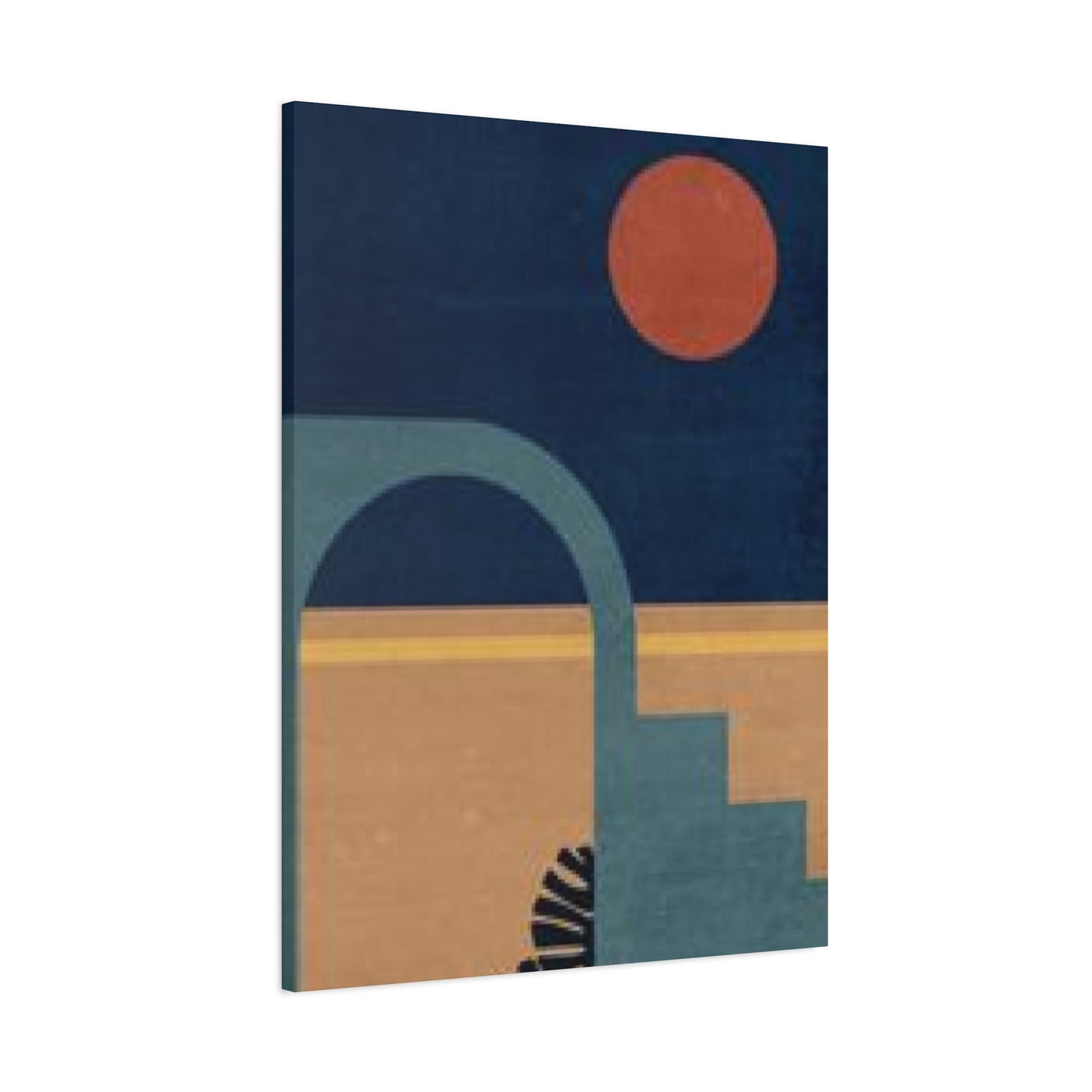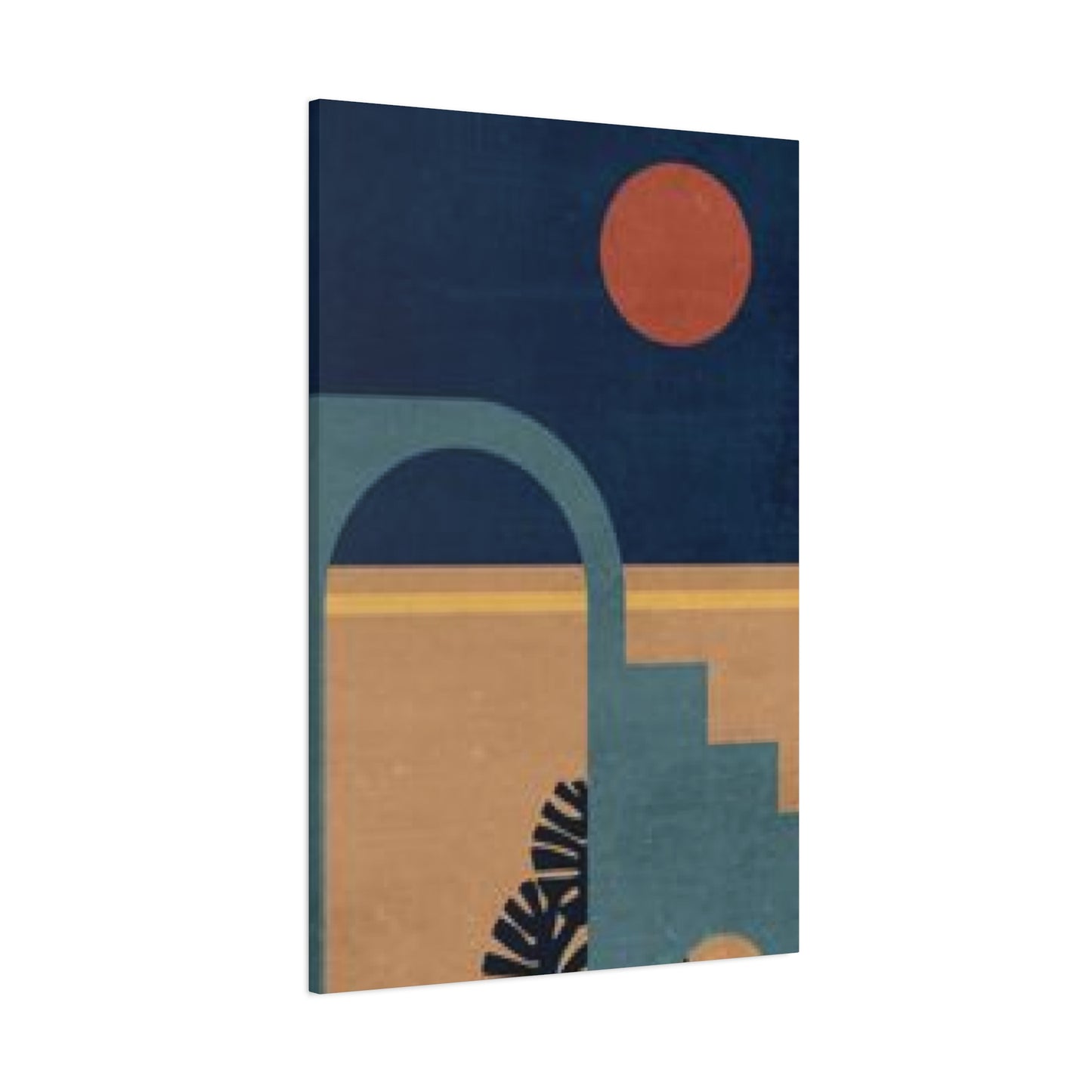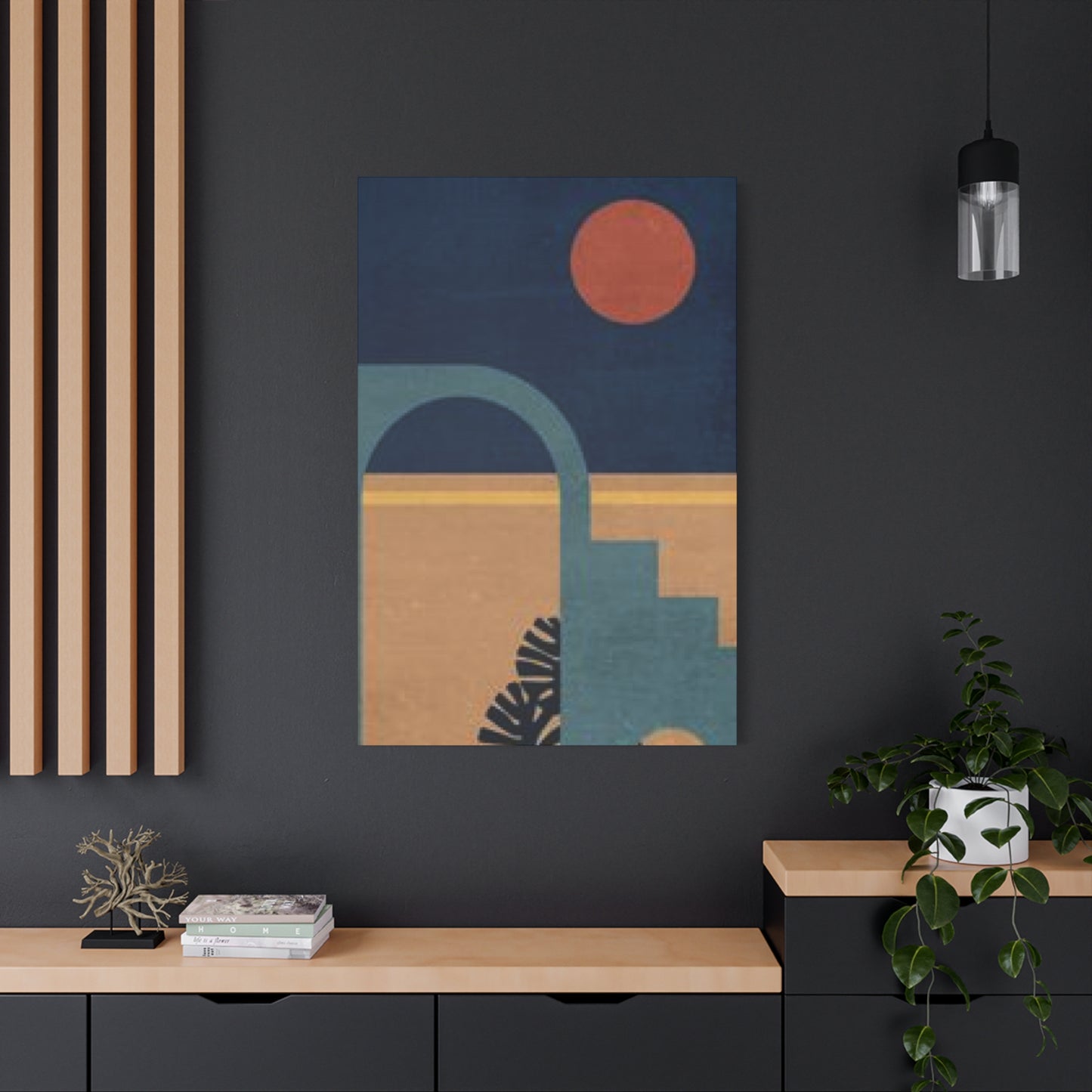Urban Dusk Meets Bohemian Spirit: Sunset in the City Moroccan Wall Art Can Create a Dreamy, Boho-Chic Atmosphere
There is a unique, fleeting magic that happens every day in a bustling metropolis. It is the moment the sun begins its descent, casting long shadows between skyscrapers and painting the sky in hues of fiery orange, soft rose, and deepening indigo. This "sunset in the city" is a daily spectacle, a moment of profound, natural beauty juxtaposed against the hard lines and man-made structures of urban life. It is a time of transition, a collective pause before the vibrant energy of the night takes over. This very essence, this romantic and ephemeral quality, is what designers and homeowners are increasingly seeking to capture within their own living spaces.
The desire is no longer just for a "modern" or "classic" look, but for an environment that tells a story and evokes a specific, powerful feeling. This is where the rich, textural world of bohemian design intersects with this urban phenomenon, creating a style that is both grounded and ethereal. Bohemian, or boho-chic, style is, at its core, a celebration of the unconventional, the artistic, and the free-spirited. It rejects rigid rules in favor of layered textures, eclectic collections, and a warm, inviting ambiance. It is a style that feels curated over time, reflecting a life of travel, art, and personal expression. Capturing the precise feeling of an urban twilight within this framework offers a new direction for the aesthetic, blending the man-made with the natural, the immediate with the timeless.
Defining the Boho-Chic Interior Aesthetic
Before we can fully explore the fusion of these two powerful concepts, it is essential to establish a clear picture of the boho-chic interior aesthetic itself. This style is far more than just rattan furniture and macrame hangings; it is a philosophy of design that champions individuality. At its heart, boho-chic is eclectic, drawing inspiration from a multitude of global cultures, artistic movements, and historical periods. It is characterized by a "more is more" approach to layering, but in a way that feels curated and cozy rather than cluttered. Texture is arguably the most important element; think of rough-woven textiles, smooth metals, shag carpets, natural wood grains, and plush velvets all coexisting in the same space. The color palette is often rich and earthy, drawing from nature—think terracotta, olive green, and sandy beige—but it is also punctuated by bold, saturated jewel tones like ruby red, sapphire blue, or amethyst purple. Pattern is another key pillar. Boho-chic interiors fearlessly mix patterns, from paisley and ikat to floral and geometric. The furniture is often low-profile, encouraging lounging and relaxation, with pieces that look collected over time rather than purchased as a set. Finally, this aesthetic is deeply personal. It is defined by the objects that fill it: stacks of books, collections of pottery, overflowing houseplants, musical instruments, and, most importantly, art that speaks to the soul of the inhabitant.
What Makes Moroccan Artistry So Timeless?
Moroccan artistry holds a singular and enduring place in the world of design. Its timelessness stems from its deep historical roots, acting as a crossroads of Arabic, Berber, Andalusian, and European cultures. This rich melting pot of influences has produced a visual language that is instantly recognizable and profoundly captivating. One of the primary reasons for its lasting appeal is its mastery of intricate pattern. Moroccan design is renowned for its complex geometric motifs, which are not merely decorative but are often imbued with symbolic meaning, drawing from Islamic principles of order and the infinite. These patterns, whether seen in zellige tilework, carved wood, or pierced metal, create a sense of harmony and boundless visual interest. Another key element is the bold and fearless use of color. From the iconic, electric Majorelle Blue to the warm, spice-market hues of saffron, paprika, and cumin, Moroccan colors are vibrant and life-affirming. This artistry also places a heavy emphasis on texture. It is a tactile style, inviting you to touch the cool, smooth surface of a tile, the rough-hewn wood of a door, or the soft pile of a Beni Ourain rug. The materials themselves—brass, silver, copper, leather, wool, and clay—are elemental and authentic, connecting the object to the earth and the artisan who crafted it. This celebration of craftsmanship is perhaps its most timeless quality. In an age of mass production, Moroccan art remains a testament to the human hand, with each piece bearing the subtle imperfections that signify its unique, handmade origin.
Capturing the Urban Sunset: The Color Palette Explained
The fusion of a city sunset with Moroccan design is, first and foremost, a story told through color. This specific palette is the foundation upon which the entire "dreamy, boho-chic atmosphere" is built. Let's deconstruct the colors of an urban sunset: it begins with the warm, radiant end of the spectrum. We see intense, fiery oranges, deep molten reds, and brilliant golden yellows as the sun kisses the horizon. These are colors of energy, passion, and warmth. Simultaneously, these warm tones are reflected and softened into shades of blush pink, soft coral, and gentle peach, painting the clouds and the haze of the city air. As the sun dips lower, the cool tones emerge to claim the sky. This is where the "city" element becomes most prominent. We see the deep, contemplative indigo of the approaching night, the shadowy purples of twilight, and the cool, steely blues that reflect off glass-and-steel skyscrapers. The magic lies in the gradient, the soft, ethereal blending of these two extremes. Now, let's overlay this with the traditional Moroccan palette. Moroccan design is already famous for its bold use of color. It celebrates deep, saturated blues, particularly the cobalt shade seen in its iconic tilework. It also heavily features warm, earthy terracottas, spicy saffron yellows, and rich paprika reds. The alignment is almost perfect. The Moroccan palette provides the perfect tools to interpret the urban sunset. A brass lantern captures the golden glow, a deep blue tapestry evokes the twilight sky, and a rust-colored rug grounds the space in earthy warmth. This palette is inherently dreamy because it avoids harsh, primary colors in favor of complex, blended, and emotive hues.
Moroccan Motifs That Echo a Cityscape at Dusk
While the color palette sets the emotional tone, it is the specific motifs within Moroccan wall art that can cleverly echo the visual language of a cityscape at dusk. This connection may not be literal, but it is deeply symbolic. Consider the prevalence of intricate geometric patterns, known as "girih" or "zellige." These tessellations of stars, polygons, and interlocking lines create a sensemap of order and complexity. This mathematical precision can be seen as a beautiful abstraction of a city grid, the network of streets and buildings viewed from above. The repeating patterns evoke the rhythm and structure of urban life, but rendered in a way that is meditative rather than chaotic. Another powerful motif is the Moroccan arch, particularly the iconic horseshoe or keyhole arch. When this shape is used in a piece of wall art, such as a carved wooden panel or a metallic mirror frame, it acts as a "window" or a "portal." It frames the space, much like looking out of an apartment window onto the skyline. This architectural element introduces a sense of structure and perspective that directly relates to the urban environment. Furthermore, the intricate latticework found in "mashrabiya" (traditional screens) can be interpreted as the glittering lights of a city at night. When a pierced metal lantern casts its complex shadows on a wall, it creates a dynamic, moving pattern of light that is strikingly similar to the distant, twinkling lights of buildings and traffic. These motifs allow the art to convey the "city" theme without resorting to a literal painting of a skyline.
The Role of "Sunset in the City Moroccan Wall Art Can Create a Dreamy, Boho-Chic Atmosphere" in Modern Homes
The deliberate integration of this specific art style serves a profound role in contemporary interiors. Modern homes often grapple with a sense of sterility; minimalist design, while clean, can sometimes feel cold or impersonal. The resident, often living in a dense urban environment, craves a sanctuary—a space that buffers them from the noise and hustle of the outside world. This is precisely the need that this unique fusion addresses. The specific statement that "Sunset in the City Moroccan Wall Art Can Create a Dreamy, Boho-Chic Atmosphere" is not just a decorative suggestion; it is a solution to a modern emotional and aesthetic problem. The "sunset in the city" element provides a direct connection to nature's daily rhythm, a grounding force that is often lost in urban living. It reminds the inhabitant of the beauty that exists even within the concrete jungle. The "Moroccan wall art" element introduces history, craftsmanship, and a sense of global connection. It replaces mass-produced, generic decor with items that have a soul and a story. The "dreamy" aspect is a direct antidote to the over-stimulation of modern life. The soft, warm colors and intricate, meditative patterns are inherently calming. They encourage the mind to wander, to relax, and to de-stress. Finally, the "boho-chic atmosphere" is the framework that gives permission for this to happen. It allows for personal expression, for comfort over formality, and for the creation of a space that is a true, authentic reflection of the self. In essence, this art style transforms a house or apartment from a mere shelter into a personal, soulful oasis.
Intricate Geometry: The Language of Moroccan Patterns
At the very heart of Moroccan artistry is its complex and mesmerizing language of geometry. These patterns are far more than simple decoration; they are a visual representation of a philosophical and spiritual worldview. Rooted in Islamic art, which often avoids figurative imagery, Moroccan geometry became a primary form of expression, representing the infinite, the divine, and the underlying order of the universe. The patterns are typically based on the star, or "najma," which can be built out with four, six,eight, twelve, or sixteen points, from which radiating lines create complex tessellations of interlocking polygons. This mathematical precision is profoundly beautiful. When you gaze at a piece of Moroccan wall art featuring these patterns—be it a carved plaster panel, a piece of zellige tilework, or a painted canvas—you are engaging with a design that is both intellectually stimulating and spiritually soothing. The eye follows the lines as they weave and interconnect, creating a focal point for meditation and contemplation. In a boho-chic setting, this geometry provides a sophisticated structure that grounds the more free-flowing, eclectic elements of the style. It acts as a counterpoint to the soft, organic shapes of plants and textiles. When rendered in the colors of an urban sunset, these geometric patterns take on a new life. A deep indigo star pattern might evoke the night sky over the city, while a radiating sunburst motif in brass or gold directly captures the last rays of the setting sun. This intricate geometry is a key ingredient in creating the "dreamy" atmosphere, as it provides a sense of boundless depth and perfect, harmonious order.
The Magic of Metalwork: Lanterns and Brass Accents
No exploration of Moroccan decor is complete without paying homage to its magical metalwork. This is one of the most effective ways to introduce the "sunset in the city" vibe into a space. Moroccan artisans are masters of brass, copper, and silver, hand-punching, engraving, and filigreeing metal to create objects of exquisite beauty. The most iconic of these are the Moroccan lanterns. These lanterns, whether hung from the ceiling, placed in a corner, or arranged in a cluster, are pieces of art in themselves. They are often crafted with panels of colored glass—deep blues, rich ambers, and ruby reds—that perfectly align with the sunset palette. When a candle or a warm bulb is lit inside, the lantern projects intricate, dancing patterns of light and shadow onto the surrounding walls. This effect is pure magic. It instantly creates a "dreamy" and intimate atmosphere, mimicking the twinkling lights of a city skyline at dusk. Beyond lanterns, other metallic accents serve a crucial role. A large, round brass tray hung on the wall acts like a miniature sun, capturing and reflecting light. Its warm, golden glow is the perfect embodiment of the sunset's warmth. Framed mirrors with intricately embossed metal frames not only add a touch of Moroccan authenticity but also work to amplify light and create a sense of greater space, reflecting the sunset colors throughout the room. This metallic element adds a necessary touch of "chic" to the "boho" aesthetic, lending a sense of glamour and sophistication that balances the more rustic, earthy textures.
Zellige and Tessellations: Tiled Wonders for Your Walls
While installing a full zellige tile wall might be a large undertaking, incorporating the look of this iconic Moroccan craft into your wall art is a powerful way to achieve the desired atmosphere. Zellige is the art of hand-crafting mosaic tilework from individually chiseled, glazed clay pieces. What makes it unique is its beautiful imperfection. Each tile is slightly different in color, texture, and shape, and when assembled, the surface has a pearlescent, undulating quality that interacts with light in a breathtaking way. This shimmering, varied surface is the perfect medium for capturing the subtle, shifting colors of a sunset. Imagine wall art that incorporates this look: a panel of zellige-style tiles in shades that gradient from terracotta to blush pink to deep plum. The way the light would play off this surface would be dynamic, changing throughout the day. This imperfect, handmade quality is the essence of the boho-chic spirit. It stands in direct opposition to uniform, mass-produced surfaces. Tessellations, the broader category of repeating geometric tile patterns, also play a key role. Wall art that features these star-and-cross or polygon-based patterns brings an immediate sense of Moroccan identity. When these patterns are rendered in a "sunset in the city" palette—perhaps deep indigo and gold, or terracotta and cream—they provide a strong, structured visual anchor for the room. This art doesn't have to be actual tile; it can be a high-quality print, a painted canvas, or a carved wooden panel that mimics the geometric precision of tilework, providing the same visual impact.
Arches and Silhouettes: Architectural Echoes in Art
A brilliant way to invoke the spirit of Moroccan design and the structure of a city is by using architectural echoes within your wall art. The most prominent and evocative of these is the Moroccan arch. The traditional shapes—the horseshoe, the keyhole, and the pointed arch—are deeply embedded in the architectural DNA of the region. Integrating these shapes into your wall decor is a powerful visual shortcut to a Moroccan atmosphere. This can be achieved in several ways. A large, frameless mirror cut into the shape of a keyhole arch makes a stunning, sculptural statement. It not only introduces the motif but also reflects the light and colors of the room, amplifying the sunset palette. Similarly, a series of three smaller, pointed-arch wooden frames, either empty or containing prints, can be grouped on a wall to create a triptych effect. Wall art, such as a canvas painting or a tapestry, that depicts an arched doorway or window looking out onto a conceptual landscape also achieves this goal. This "view" motif is particularly effective for the "sunset in the city" theme, as it creates a sense of looking out at the urban dusk from within a serene, Moroccan-inspired interior. These architectural silhouettes provide a strong, grounding structure. In a boho-chic setting, which can sometimes become overwhelmed with soft textiles and small objects, these strong, defined shapes add a necessary element of graphic punch and sophistication. They frame the space, literally and figuratively, creating a sense of destination.
Textured Tapestries: Weaving the Moroccan Dream
Textile art is a cornerstone of both Moroccan and boho-chic design, making it an essential element for fusing the two. A large, textured tapestry or wall hanging can transform a room more effectively than almost any other single object. It provides an immediate injection of color, pattern, and, most importantly, softness, which is crucial for creating a "dreamy" atmosphere. Look for pieces that speak the visual language of the theme. This could be a woven piece that features a geometric pattern, like the diamond-and-line motifs found in Berber rugs. These simpler, more tribal patterns are a key part of the bohemian aesthetic and connect deeply to Moroccan heritage. A hand-knotted wall hanging with a deep, plush pile and long tassels adds a wonderful, tactile dimension that begs to be touched. When searching for the perfect piece, the color palette is paramount. A tapestry that blends the warm and cool tones of the urban sunset—think a gradient from rust orange through dusty rose to a deep blue—can serve as the primary focal point of the room. This single piece can establish the entire color story. The "boho" aspect is amplified by the choice of material. Natural fibers like wool, cotton, and jute add an earthy, organic feel. The "chic" element can be introduced by finding tapestries that weave in metallic threads, adding a subtle, sophisticated shimmer that catches the light, much like the lights of a city or the glint of a brass lantern. This softness is the perfect counterbalance to the hard lines of a city environment.
Lighting's Crucial Role in Enhancing Your Wall Art
You can hang the most beautiful piece of "Sunset in the City Moroccan Wall Art," but its power to create a "dreamy, boho-chic atmosphere" will be lost without proper lighting. Lighting is not just functional; it is the sculptor of ambiance. To achieve the "dreamy" quality, avoid harsh, overhead ceiling lights. Instead, opt for a layered lighting scheme that creates pools of warm, inviting light. This is where Moroccan lanterns truly shine. Placing a warm, low-wattage bulb or a flickering LED candle inside a pierced metal lantern will cast complex, web-like shadows across your walls and ceiling, instantly creating a sense of magic and intimacy. This dynamic play of light and shadow is the essence of a dreamy atmosphere. For the wall art itself, consider dedicated accent lighting. A small, discreet spotlight, often called a "picture light," mounted above a tapestry or canvas can make it a true focal point. Ensure the bulb is warm (in the 2700K range) to enhance the sunset colors of orange, red, and gold, rather than washing them out with cool, blue-toned light. String lights, a staple of boho-chic decor, can be used to great effect. Draping them around a large, arch-shaped mirror or interspersing them with plants on a shelf adds a whimsical, twinkling quality reminiscent of city lights. Dimmers are your best friend. Installing dimmers on your main light sources allows you to transition the room's atmosphere from bright and functional during the day to soft, moody, and sunset-like in the evening.
Softness and Serenity: Fabrics That Complement Moroccan Decor
The "dreamy" and "boho-chic" elements of your atmosphere are heavily reliant on the use of soft, layered fabrics. These textiles are the counter-narrative to the hard, often-impersonal feel of modern urban life. They introduce comfort, serenity, and a crucial tactile dimension. Your Moroccan wall art, whether it's a metal sculpture, a wooden panel, or a framed print, should be complemented by a rich landscape of fabrics throughout the room. Start with the seating. A plush, low-slung sofa or a collection of floor cushions invites relaxation. This is a hallmark of both Moroccan "riad" living and the bohemian lifestyle. Choose textiles in solid colors that are drawn from your "sunset in the city" palette. A deep indigo velvet sofa, a scattering of terracotta-colored linen cushions, or a soft, blush-pink chenille throw blanket all contribute to the theme. Layering is essential. Don't just have one rug; layer a smaller, patterned Moroccan rug (like a colorful Boucherouite or a classic Beni Ourain) on top of a larger, neutral jute or sisal rug. This adds instant texture and boho-chic confidence. Curtains should be soft and flowing. Avoid stiff, formal drapery. Instead, choose sheer, gauzy linen or cotton curtains that will billow in the breeze and diffuse sunlight, casting a soft, dreamy glow across the room. These textiles absorb sound, making the space quieter and more serene, and they provide the physical comfort that makes the "dreamy" atmosphere a tangible reality.
Creating a Meditative Space with Sunset Hues
The color palette of an urban sunset is inherently meditative. The warm, fading light of the day signals to our bodies that it is time to wind down, to reflect, and to rest. By intentionally designing a space around these hues, you are creating an environment that supports mindfulness and serenity. This goes beyond simple decoration; it is about crafting a psychological sanctuary. The "sunset in the city" theme is perfect for a small, dedicated meditative corner or for setting the overall tone of a bedroom or living room. The key is to lean into the softer, more transitional colors. While fiery red is part of a sunset, for a meditative space, you would emphasize the dusty rose, the soft lavender, the warm terracotta, and the deep, calming indigo. These colors are less jarring and more conducive to a quiet mind. Your Moroccan wall art can serve as a "drishti," or a visual focal point for meditation. A complex geometric pattern, in particular, is ideal for this. Allowing your gaze to trace the endless, interlocking lines can help center the mind and filter out "noise." Pairing this art with other sensory elements deepens the meditative quality. Think of a brass oil diffuser releasing the scent of sandalwood or frankincense, the soft sound of a small water feature, and the plush, supportive feel of a large Moroccan floor pouf. This multi-sensory approach, anchored by the visual cue of your sunset-hued art, creates a truly immersive and "dreamy" space for relaxation and self-reflection.
Eclectic Pairings: Mixing Moroccan Art with Other Styles
A common misconception about themed decor is that you must be a purist. This is the antithesis of the boho-chic philosophy. The "chic" in boho-chic comes from the confident and artful mixing of styles, and Moroccan wall art is a surprisingly versatile partner. To avoid your space looking like a stage set, it is crucial to pair your Moroccan pieces with elements from other design languages. This eclectic mix is what makes the space feel personal and modern. For instance, the intricate, handmade quality of a Moroccan metal lantern or a carved wood panel looks incredible when juxtaposed with the clean lines of mid-century modern furniture. Imagine a sleek, walnut-credenza topped with a collection of vibrant Moroccan pottery. The contrast between the minimalist, organic modernism and the ornate, traditional craft is dynamic and sophisticated. Similarly, you can blend Moroccan elements with a Scandinavian aesthetic. A neutral, hygge-focused room with white walls and light wood floors becomes instantly warmer and more "boho" with the addition of a large, textured Moroccan wedding blanket (handira) used as a wall hanging. Industrial elements, which speak to the "city" theme, also pair beautifully. An exposed brick wall, a common feature in urban lofts, is a perfect backdrop for a glowing brass mirror or a colorful tapestry, the roughness of the brick enhancing the art's refinement. The key is to find a common thread, such as color or material, and let the styles converse rather than compete.
The Importance of Natural Elements: Plants and Wood
The boho-chic aesthetic is deeply rooted in nature. It celebrates organic materials and the vibrant life force of the natural world. To truly create a dreamy, bohemian atmosphere, and to soften the "city" aspect of your theme, the inclusion of natural elements like plants and wood is non-negotiable. Plants are the living, breathing component of your decor. They purify the air, add an organic, sculptural quality, and provide a necessary splash of green that beautifully complements the warm sunset palette. In a Moroccan-boho context, think of plants that evoke an exotic, oasis-like feel. A tall, graceful palm or a striking bird of paradise can anchor a corner. Trailing plants, like pothos or string of pearls, look wonderful cascading from a high shelf or a macrame plant hanger, adding to the layered, "more is more" feel. Displaying these plants in terracotta pots or ornate, painted Moroccan ceramic planters reinforces the theme. Wood, in all its forms, is equally vital. It provides a grounding, earthy counterpoint to the shimmer of metal and the coolness of tile. Look for furniture or art pieces with a natural, unstained, or rough-hewn finish. A large, rustic wooden-framed mirror or a wall shelf made from reclaimed timber adds instant warmth and history. This connection to the natural world is essential for the "dreamy" quality. It's a reminder of the world beyond the concrete, and when paired with art depicting the sunset, it creates a powerful narrative of nature's beauty, both wild and urban.
Layering Textures for a Full-Bodied Bohemian Feel
If color is the foundation and pattern is the language, then texture is the soul of a boho-chic interior. A room can have all the right elements, but without a rich tapestry of layered textures, it will fall flat and fail to achieve that "dreamy," immersive quality. Texture is what makes a space feel cozy, inviting, and complete. It's an appeal to our sense of touch, not just sight. Your Moroccan wall art will provide several key textures to start with—perhaps the smooth, cold gleam of a brass accent, the rough-carved grain of a wooden panel, or the plush, soft pile of a woven tapestry. The goal is to build upon these. On the floor, start with a large, natural-fiber rug like jute, and then layer a smaller, high-pile Moroccan rug on top. On the sofa, don't stop at one type of cushion. Mix velvet, linen, and faux fur, and add a chunky knit throw. The combination of smooth, plush, rough, and soft is what creates visual and tactile interest. Think about the walls themselves. A smooth, painted wall is a fine backdrop, but for a truly deep boho feel, consider a textural finish like limewash or even a removable grasscloth wallpaper on an accent wall. This creates a soft, chalky, or woven background that makes your art pop. Even your plants add texture, from the spiky fronds of a dracaena to the smooth, waxy leaves of a rubber plant. This dense layering of contrasting and complementary textures is what ultimately builds that full-bodied, enveloping atmosphere that defines the boho-chic experience.
A Free-Spirited Approach to Art Placement
The final piece of the puzzle is how you display your "Sunset in the City Moroccan Wall Art." A rigid, symmetrical, or overly formal arrangement can undermine the entire boho-chic and dreamy feeling you're trying to achieve. This style calls for a more free-spirited, personal, and eclectic approach to placement. Forget the old rule that art must be centered perfectly above a sofa. Instead, embrace the asymmetry of a gallery wall. A boho-chic gallery wall is a story of your life. It should be a dense, "salon-style" cluster that mixes your key Moroccan pieces with other items. Imagine a large, patterned tapestry as the "anchor," with smaller pieces arranged around it: a small, round brass mirror, a framed postcard, a watercolor painting of a city skyline, a set of three small, arched frames, and even a mounted object like a string of Moroccan beads. This mix of sizes, shapes, and mediums is the essence of the bohemian spirit. Another approach is to lean your art. A large, framed canvas depicting an abstract sunset can look incredibly chic and relaxed simply leaning against a wall on top of a console table or even resting on the floor. This implies a space that is evolving and not too "precious." Don't confine art to the living room. Place a small, unexpected piece of Moroccan metalwork in a bathroom, or hang a beautiful textile in the kitchen. This element of surprise and personal whim is what makes the space feel authentically yours, dreamy, and perfectly "boho."
The Living Room: A Bohemian Sanctuary at Sundown
The living room is often the heart of the home, the primary space for relaxation and socializing. It is the perfect canvas for demonstrating how "Sunset in the City Moroccan Wall Art Can Create a Dreamy, Boho-Chic Atmosphere." Here, you can make your boldest statements. Start by identifying the main focal wall, likely the one behind your sofa. This is the ideal location for your largest and most impactful piece. A massive, richly-colored Moroccan tapestry that bleeds from deep blue to terracotta orange can set the entire mood. Alternatively, a large-scale, triptych-style canvas painting that interprets a city skyline at dusk through geometric, Moroccan-inspired patterns would be a stunning centerpiece. Flank this central piece with layered lighting. A tall, floor-standing, arc-style lamp can provide overarching light, while a cluster of Moroccan metal lanterns on a side table or hanging in a corner provides the essential, magical glow. The furniture should support the theme. A low-profile, plush sofa in a neutral tone, piled high with cushions in sunset hues and varied textures (velvet, kilim-patterned, linen) is key. Incorporate natural elements with a large, rustic-wood coffee table and an abundance of plants, like a tall fiddle-leaf fig in a painted ceramic pot. The final layer is the small decor: a brass tray on the coffee table, stacks of art books, and a soft, patterned rug that ties all the colors together. The result is a complete sanctuary that feels like a warm, inviting oasis as the actual sun sets outside.
The Bedroom: A Dreamy Escape with Moroccan Flair
The bedroom is arguably the most important space for cultivating a "dreamy" atmosphere. This is your personal retreat, a space designed for rest, serenity, and escape. The "sunset in thecity" theme is exceptionally well-suited here, as its warm, calming palette is conducive to sleep and relaxation. The wall above the bed is the natural focal point. Instead of a traditional headboard, consider hanging a large, soft Moroccan wedding blanket (handira). These textiles, traditionally woven from wool and cotton and adorned with mirrored sequins, add incredible texture and a soft, shimmering quality. The sequins will gently catch the low light, evoking the feel of distant city lights or stars. Another powerful option is a carved wooden "mashrabiya" panel, which creates a sense of an exotic, architectural headboard. The color palette here should lean toward the softer end of the sunset spectrum: blush pinks, dusty lavenders, soft oranges, and creamy whites, balanced by the grounding depth of indigo or charcoal grey. Lighting is critical. Forget harsh overhead lights. Rely entirely on bedside lamps with warm bulbs, perhaps with bases made of pierced metal or colored glass. String lights draped around a full-length, arch-shaped mirror can add a touch of whimsical, boho-magic. Soft, layered textiles are a must: a high-pile rug for your feet to land on in the morning, soft linen or cotton bedding, and a plush velvet armchair in a corner for a quiet reading nook. This combination of soft textures, warm light, and evocative art creates a true escape.
The Dining Area: Hosting with an Exotic, Urban Vibe
The dining area, whether it's a dedicated room or a corner of a larger space, is a place of gathering. Applying the "sunset in the city" theme here can transform a simple meal into a memorable, atmospheric experience. The goal is to create a space that feels both sophisticated and intimately cozy. The "city" element can be interpreted as a "night out" vibe, while the "Moroccan" and "boho" elements make it exotic and welcoming. A statement lighting fixture is a perfect starting point. A large, intricate Moroccan pendant light made of pierced brass or copper, hung low over the center of the dining table, creates an immediate and dramatic focal point. When lit, it will cast beautiful, intricate shadows, setting a "dreamy" mood for evening dinners. On the walls, a gallery arrangement can work wonderfully. Curate a collection of art that speaks to the theme: a framed print of a Moroccan archway, an abstract painting with a sunset color palette, a small, round metal-framed mirror, and perhaps a pressed-botanical print to add a natural element. For a bolder statement, a feature wall papered in a sophisticated, removable wallpaper with a geometric Moroccan tile pattern can define the space. Pair this with a solid, rustic wooden table to ground the room. The "boho" touch comes from the seating—perhaps a mix of wooden chairs and a bench draped with a colorful, patterned textile or faux-fur throw. This mix creates an eclectic, traveled feel, making every dinner party feel like an escape to a chic, urban riad.
The Home Office: Inspiring Creativity with Warm Tones
In an age of remote work, the home office needs to be more than just a functional desk in a corner. It needs to be a space that inspires creativity, focus, and a sense of calm well-being. A sterile, corporate-feeling office can stifle creativity, which is why the warm, soulful "sunset in the city" theme is a brilliant choice. The "sunset" palette of oranges, yellows, and reds is associated with energy and creativity, while the "city" aspect speaks to ambition and connection. The "dreamy, boho" side ensures the space doesn't become stressful, keeping it grounded and serene. Your wall art is your primary tool here. Position a piece of art that you find inspiring directly in your line of sight. This could be a vibrant, abstract canvas that explodes with sunset colors, or a more structured, geometric Moroccan print that helps focus the mind. A corkboard framed with a carved Moroccan-style wooden frame becomes a "boho-chic" and functional piece of wall art for pinning notes and inspiration. Natural elements are crucial for combating screen fatigue. Surround your desk with easy-to-care-for plants. Use a solid wood desk rather than a metal or laminate one to add warmth. A small, personal-sized Moroccan rug under your chair adds a splash of color and tactile comfort. Even your accessories can contribute: a set of pencils in a hand-painted Moroccan ceramic cup, a brass letter opener, or a small, framed photo of a cityscape at dusk. This creates a workspace that feels personal, warm, and conducive to your best, most creative work.
Beyond Cliches: Authentic Moroccan Art vs. Mass-Produced Decor
When building an aesthetic as specific as this, there can be a temptation to rely on mass-produced items that mimic the style. While these can be budget-friendly, achieving a truly authentic "boho-chic" atmosphere relies on the "boho" spirit of curation, uniqueness, and celebrating the artisan. The "chic" element, paradoxically, often comes from the authenticity of the "boho" element. There is a tangible difference in energy between a plastic, factory-made lantern and one that has been hand-punched by an artisan in Marrakech. The mass-produced item is simply a prop; the authentic piece has a story, a soul, and the subtle, beautiful imperfections of the human hand. A true boho-chic space feels collected over time, not ordered from a single catalog. This doesn't mean every piece must be an expensive antique. It means favoring items from small businesses, fair-trade marketplaces, or even second-hand shops. A vintage, woven textile found at a thrift store has more bohemian character than a new, perfectly-made-but-sterile equivalent. When selecting your "Sunset in the City Moroccan Wall Art," look for signs of craftsmanship. Is the wood carved, not molded? Is the metal punched, not stamped? Is the tapestry woven, not printed? Investing in one or two key, authentic pieces—like a genuine Berber rug, a handmade metal mirror, or a piece of vintage pottery—will elevate all the other, more accessible items in the room. This mix of high and low, old and new, authentic and "inspired-by," is the true heart of the eclectic, boho-chic style.
The Enduring Appeal of Fusing Urban and Exotic Styles
The fusion of "urban" and "exotic" styles is not just a passing trend; it is a direct reflection of our modern lives and aspirations. We are an increasingly global and interconnected society. Many of us live in cities, surrounded by concrete and technology, but we simultaneously harbor a deep-seated desire for connection—to nature, to history, and to cultures far from our own. This design fusion is the physical manifestation of that desire. The "urban" element—represented by the "sunset in the city" concept, clean lines, or industrial touches—acknowledges our present reality. It is modern, sophisticated, and energetic. The "exotic" element—represented by the rich, handcrafted traditions of Moroccan art—provides the soul, the warmth, and the sense of escape we crave. It's a form of "armchair travel," allowing us to inhabit a space that feels both worldly and deeply personal. This combination is successful because the two elements balance each other perfectly. The structure of the city tempers the "anything goes" freedom of the bohemian. The warmth and history of the Moroccan art soften the hard edges of the urban. The resulting atmosphere is the best of both worlds. It is a space that feels relevant and contemporary, yet also timeless and serene. This enduring appeal lies in its ability to create a home that is not an escape from life, but rather a richer, more beautiful, and more soulful embrace of it, in all its complexity.
Conclusion:
We have journeyed through the intricate patterns, warm palettes, and rich textures that define this unique and evocative design narrative. We've seen how the fleeting, poetic beauty of a city sunset can be captured and held within the timeless, handcrafted artistry of Moroccan decor. The central thesis—that "Sunset in the City Moroccan Wall Art Can Create a Dreamy, Boho-Chic Atmosphere"—is more than just an aesthetic proposition. It is a pathway to crafting a home that serves as a true sanctuary for the modern soul. This fusion is not about following a rigid set of rules; it is the very opposite. It is an invitation to embrace the core philosophy of boho-chic design, which is rooted in personal expression, freedom, and the artful layering of stories.
The power of this style lies in its profound ability to balance contrasts. It marries the "city"—our modern, fast-paced, structured reality—with the "sunset," a daily, natural reminder of transition, peace, and beauty. It weds this contemporary urban experience with the "Moroccan," an artistic tradition steeped in ancient history, meticulous craftsmanship, and a deep spiritual connection to pattern and color. The "dreamy" atmosphere is the emotional product of this fusion, an ethereal quality born from soft, warm lighting, shimmering metallics, and a color palette that soothes and inspires. The "boho-chic" framework is the permission slip to bring these elements together in a way that is eclectic, personal, and unapologetically you.
Creating this atmosphere is an act of curating, not just decorating. It's about choosing pieces that resonate. It might begin with a single, large tapestry that bleeds the colors of a desert dusk. It could be a collection of pierced brass lanterns that cast magical, web-like shadows on your walls, instantly transforming a simple room into an intimate den. It might be a large, arch-shaped mirror that acts as a portal, reflecting your own space back to you through an exotic frame. Or it could be a carefully curated gallery wall that mixes geometric Moroccan prints with abstract cityscapes and personal photographs.
Ultimately, bringing this vision to life is about engaging all the senses. It's the tactile pleasure of a plush rug underfoot, the visual meditation of tracing an intricate geometric pattern, the soft, diffused glow of warm light through a colored glass lamp, and the serene, quiet energy that a room full of sunset hues provides. You are building an environment that buffers you from the chaos of the outside world and welcomes you into a space that is entirely your own—a space that is warm, worldly, soulful, and deeply, wonderfully chic. This is your personal oasis, a home where the spirit of the urban and the soul of the exotic meet, and the "dreamy" atmosphere is the beautiful, everyday result.


















